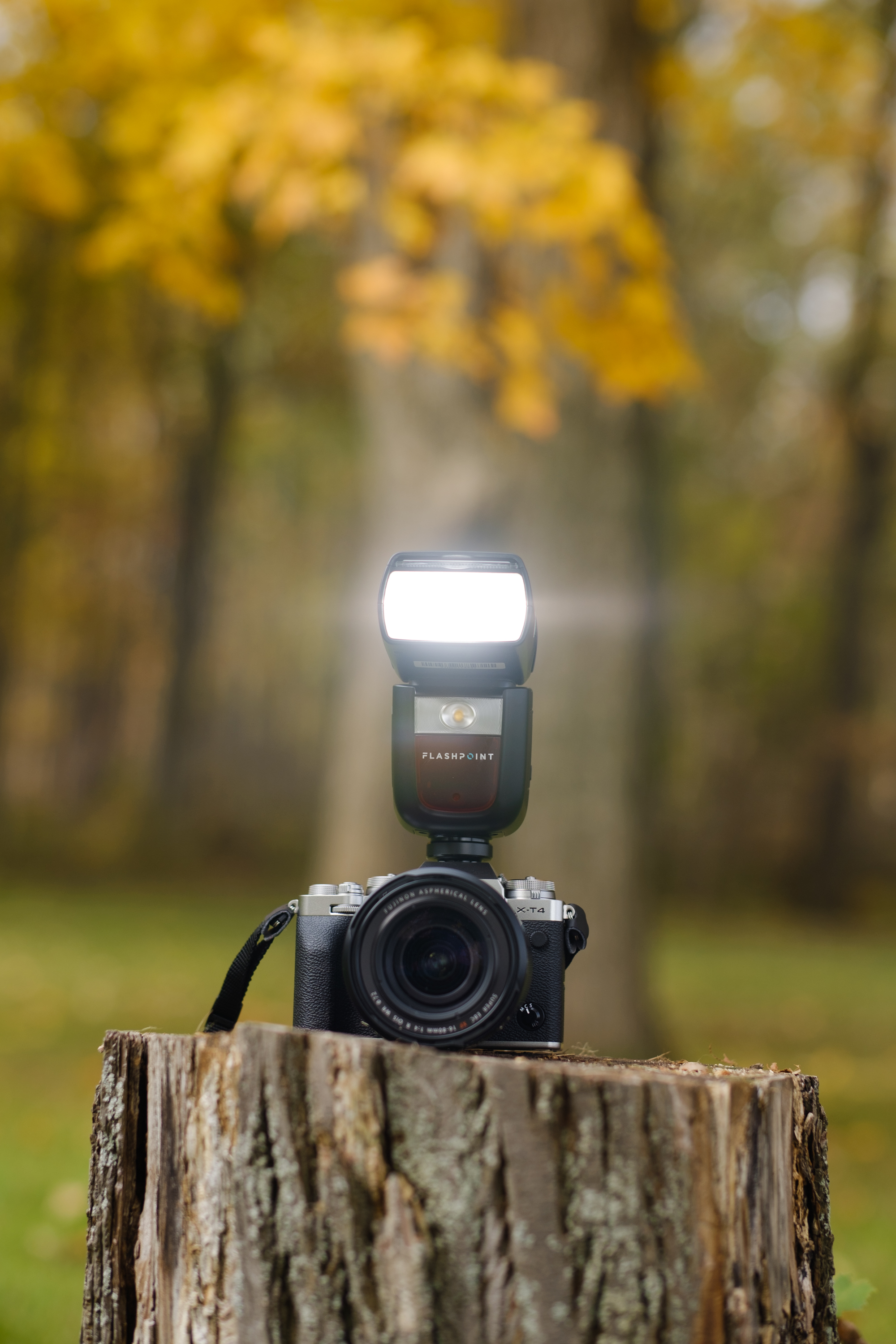There are just some things you shouldn’t buy as cheap off-brands. Oreos. Coffee. Running shoes. But, flashes shouldn’t be one of them, offering in many cases more features and power than options made by major camera manufacturers. The Flashpoint Zoom Li-on III is one of those flashes. With a long feature list that ranges from multi-shot to HSS and built-in radio transmission, the Zoom Li-on III has a lot to offer for under $300.
After switching camera brands to Fujifilm, I needed a new flash. I spent several weeks with the Flashpoint Zoom Li-on III to see if a $290 flash could keep up. After shooting everything from weddings to sports with this flash, I can safely say it’s not going to leave a bad taste in your mouth – like off-brand Oreos.
Table of Contents
Too Long, Didn’t Read
The Flashpoint Zoom Li-on III packs a lot of advanced features for a $290 flash, including multi-mode, rear-curtain, and high-speed sync. It even has the same guide number as Canon’s $1,099 flash. There’s a lot to love about this flash, but there’s a learning curve and it’s not rain-ready.
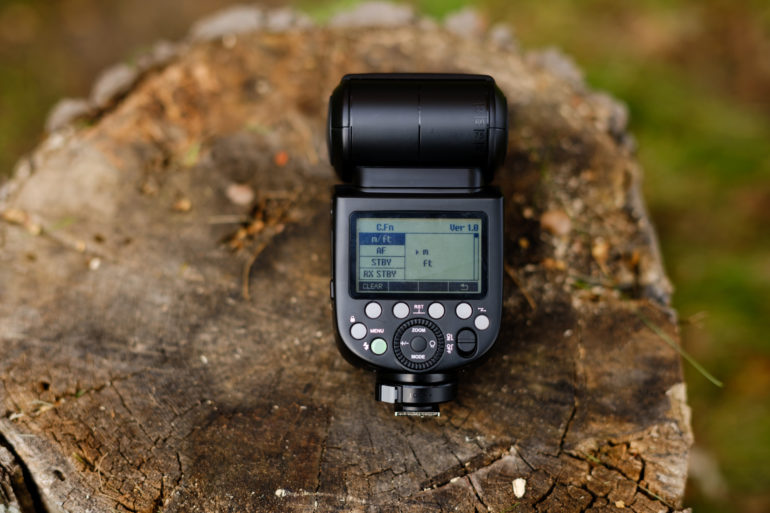
Flashpoint Zoom Li-On III Pros and Cons
Pros
- High-speed Sync
- Multi-shot mode
- Built-in radio transmission
- Modeling light
- Fast performance
- Lots of power, with the ability to add in just a little light at 1/256th
- Affordable
Cons
- Partially exposed battery shouldn’t be taken in the rain
- The learning curve is a bit higher
- Tilt head doesn’t have a lock
Gear Used
I used the Fujifilm-compatible version of the Flashpoint Zoom Li-on III with my X-T4, the 16-80mm kit lens, and the 50mm f1 R WR. I used this flash both on camera, and off with the aid of the Flashpoint R2 Pro Mark II Transmitter. I softened the light with a Godox 32×32 inch Speedlite Softbox off-camera and the MagMod Sphere on-camera. I also used this flash with a 12-foot Cheetah Stand.
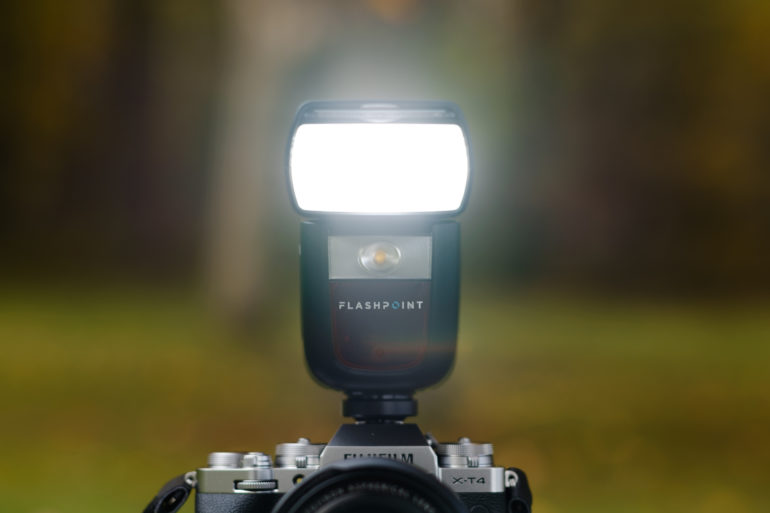
Innovations
As a Mark III, this flash sees more minor updates than major ones. It adds a modeling light, a switch on the side to easily go from M to TTL modes, a bigger battery, and a quick-release switch. The biggest innovation is that it offers several advanced features in a flash that’s priced under $300.
Flashpoint Zoom Li-On III Tech Specs
Adorama lists the following tech specs for the Flashpoint Zoom Li-on III:
- Guide Number: 197 ft/60 meters @ISO 100 200mm zoom
- Energy Output: 76ws
- Flash Exposure Control: TTL
- Manual Flash: Remote (Master or Slave, with Groups)
- Remote or Manual Flash (Master or Slave, with Groups) using the Integrated R2 Radio System: HSS
- Lens Coverage: 20-200 mm with automatic or manual zoom control
- R2 Radio Range: >330ft / 100m
- R2 Radio Channels: 32
- R2 Groups: 4 Transmitter (A camera/B/C/D) 5 Receiver (A/B/C/D/E)
- Triggering Modes: Hot Shoe, R2 Radio Controller (integrated), Sync Port, Optical Slave S1, Intelligent Optical Slave S2
- Bounce Function (Tilt and Swivel): 0 to 330° horizontally (180° in any direction) and -7° to 120° vertically
- Auto Focus Assist: Auto sense LED. Range 2.0-32.8′
- Model Light: 10 level SMD LED
- Power Source: 7.2V/2600mAh Li-ion polymer battery 2.6Ah 18Wh
- Power Control: 1/256th power to full power in 1/3 and 1/10th stop increments
- Recycle Time: < 1.5 seconds
- Full power flashes per charge: Approx. 450
- Flash Duration: 1/300 to 1/20,000s (t0.1)
- High Speed Sync: Up to 1/8000s
- Exposure Compensation (TTL): ± 3 stops in 1/3 of a stop increments
- Dimensions: 7.7 X 3.0 X 2.3″ / 75 X 59 X 195mm
- Weight with battery: 18.7 oz / 530g
Ergonomics
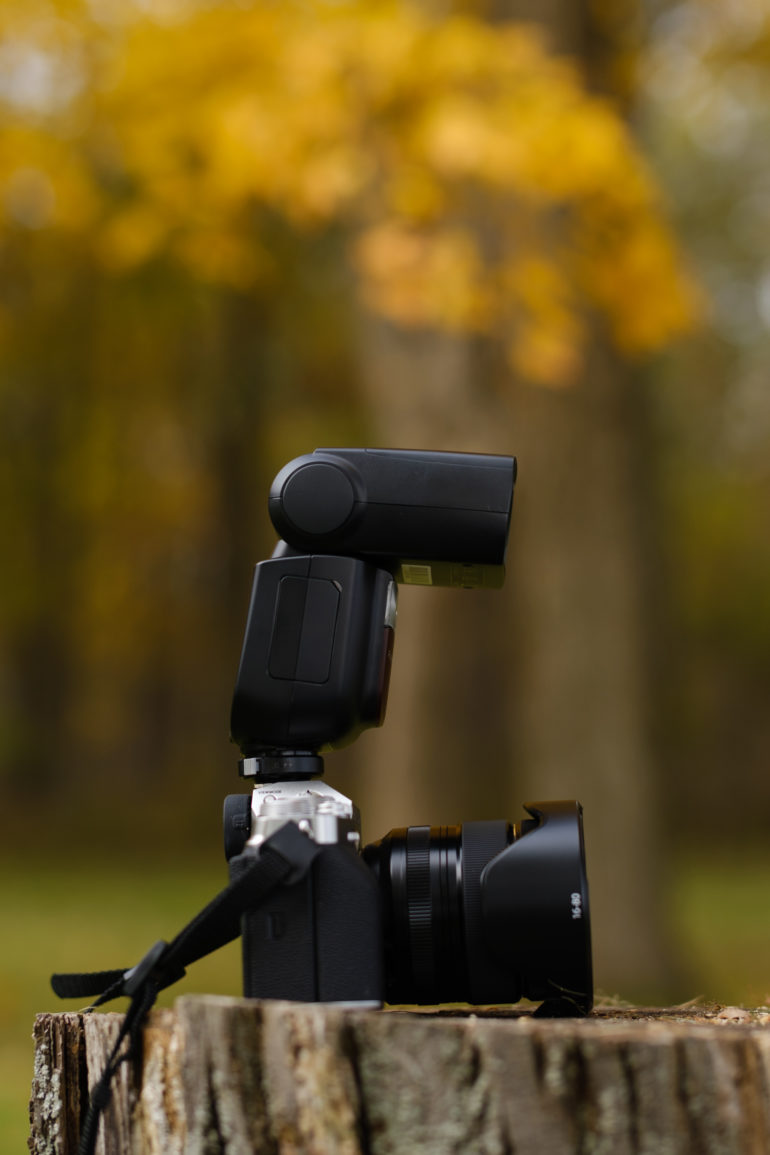
As a hot-shoe flash with a tilting bounce head, the Flashpoint Zoom Li-on III takes on the traditional I to L shape of most speedlights. It’s slightly larger than my Nikon SB 700 but smaller than Canon’s beefy EL-1. It weighs about 18.7 ounces and didn’t add much of a burden to the top of my Fujifilm X-T4.
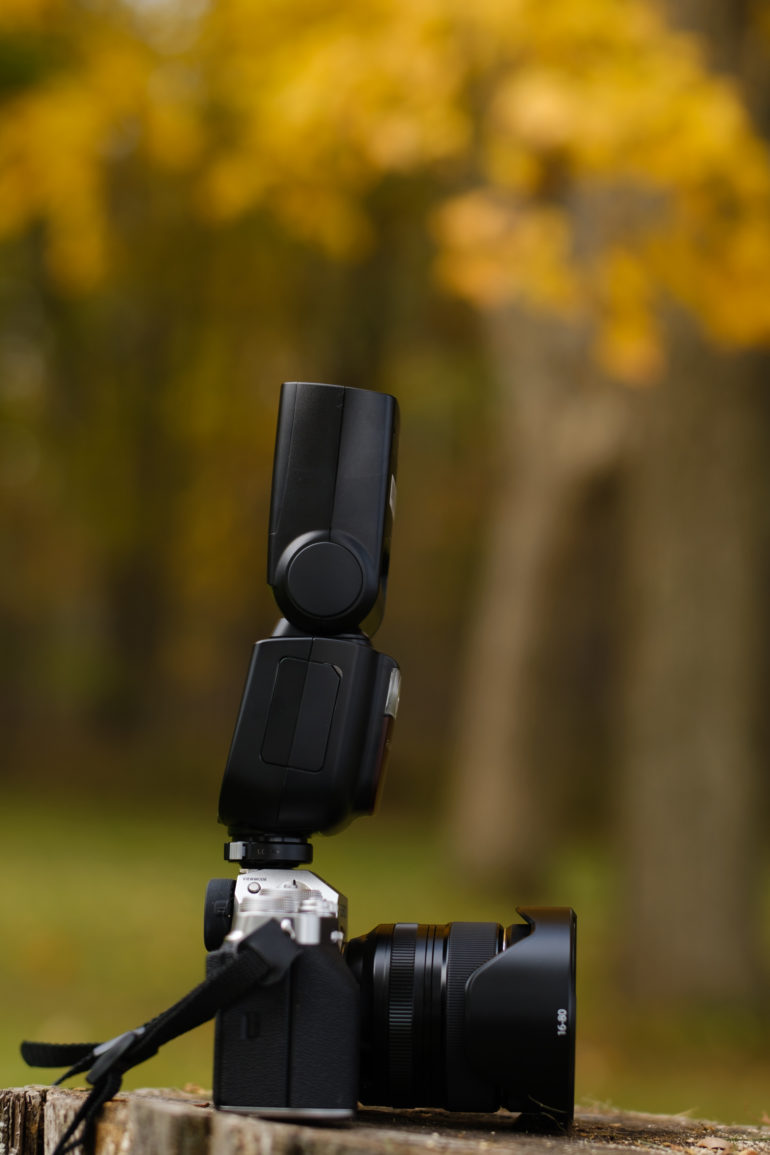
The back of the flash is dominated by a screen, seven buttons, a scroll wheel with four shortcuts and an eighth button, and the on-off switch. The back is a bit crowded, which led me to a little confusion. The label for the menu button, for example, is next to the menu button but above the flash button. I confused the flash button for the menu button a few times because of this. I’ll talk more about the buttons in the Ease of Use section below.
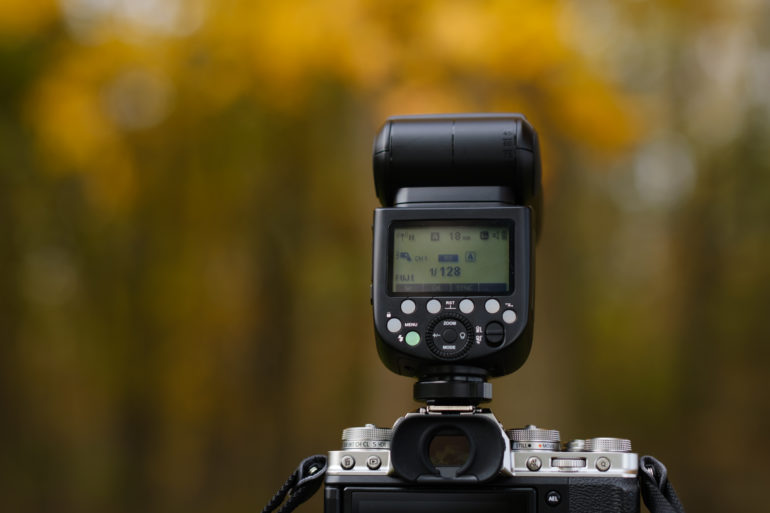
The rechargeable battery is large enough that you see the ends on both the right and left sides of the flash itself. On one side, a button pops the battery out, and then the battery slides out the other side. A TTL to M mode switch also sits on one side.
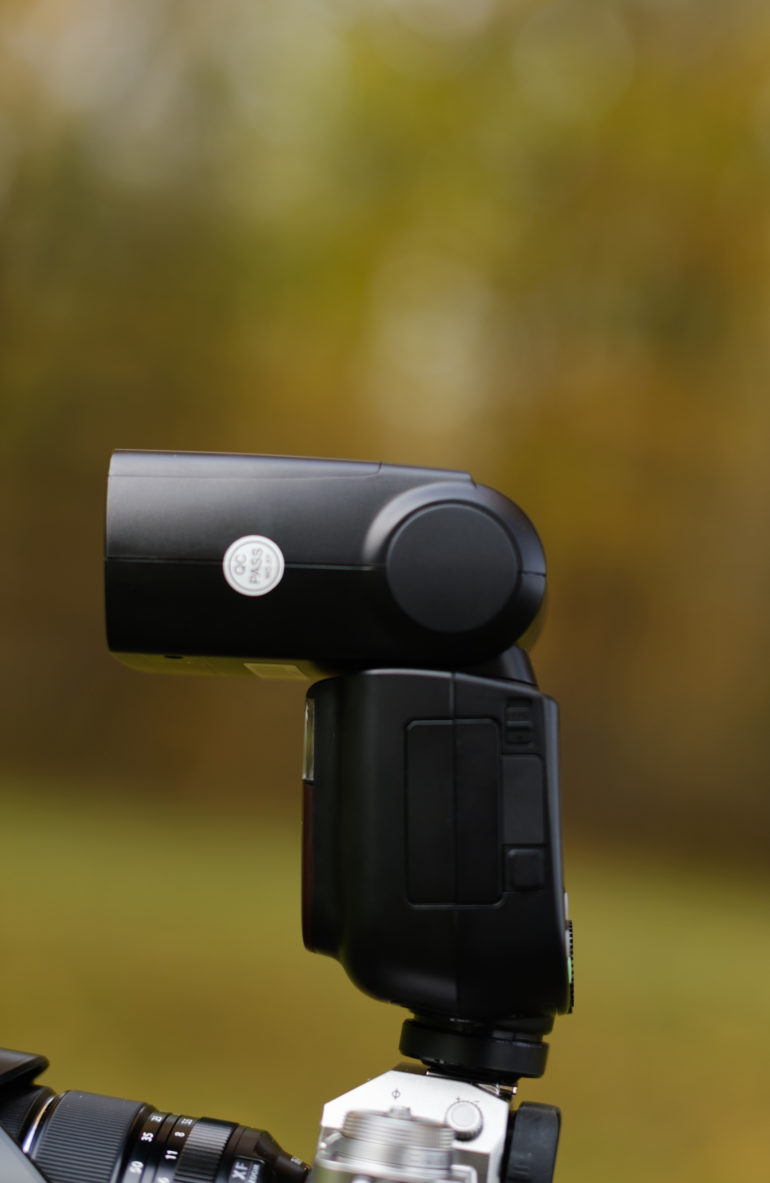
The flash head doesn’t require pushing a button to adjust the position. It can move if you bump it, but stays put in most scenarios. It did slip out from bouncing off the ceiling once while I was shooting. I would have preferred a lock over the faster adjustments. The head tilts all the way up to bounce off a ceiling and can also twist almost all the way to the back.
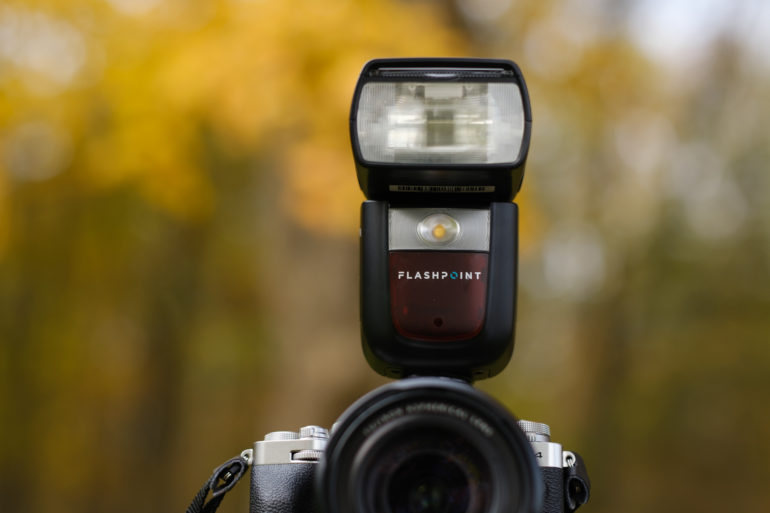
The front of the flash houses the modeling light below the main flash head, as well as a red window where the AF assist beam lives. The bottom uses a nice twist lock to sit inside of the hot shoe slot. You need to push in a small button and twist to lock the flash in. I found this both easier to use and more secure than the toggle on my old SB-700.
Build Quality
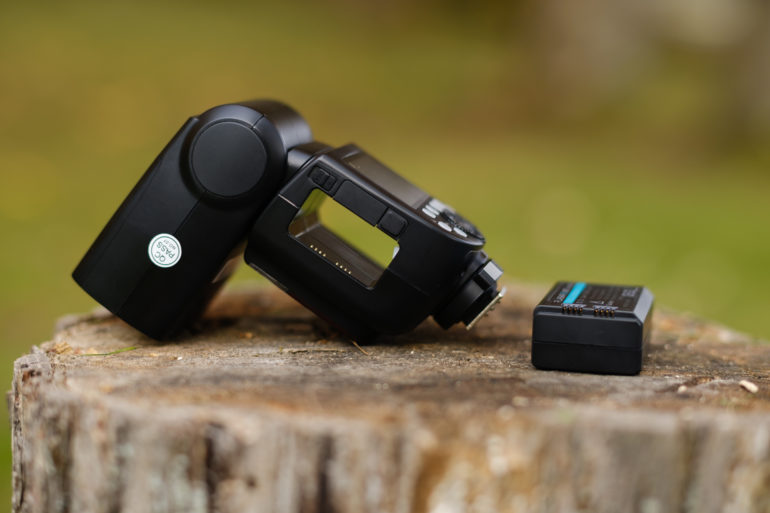
The Flashpoint Zoom Li-on III doesn’t feel like a cheap flash. The plastic construction actually feels a little nicer than my Nikon flash. The buttons and switches all feel nice and smooth.
I’ve taken non-sealed flashes in the rain for a few minutes to backlight the rain. It’s not something I can recommend with the Flashpoint Zoom Li-on III, however. The battery compartment is open at the sides, so there’s more potential for rain to get in. I was caught in an unexpected mist while shooting a wedding with this flash and it didn’t get destroyed. But, I’ll be using a camera rain poncho or big Ziplock if I want to use this flash in heavier rain.
Ease of Use
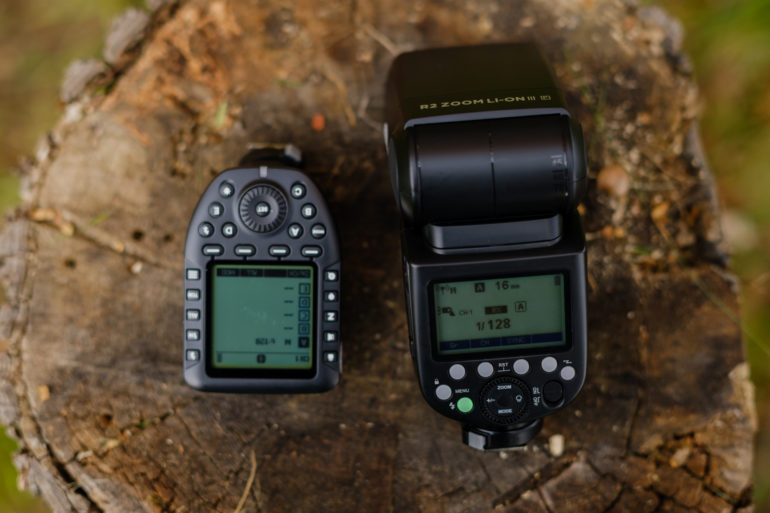
The Flashpoint Zoom Li-on III is a flash that required digging in the instruction manual, personally. I’ve used a few different flashes before and there were a few things about this flash that were not self-explanatory.
First, the buttons on the back are poorly labeled. The menu label is just as close to a different button as it is to the menu button. Flashpoint’s symbol for the wireless connection is also a Z-shaped arrow, not the standard signal tower for wireless.
Second, there are a lot of features in this flash and only so much room to display them. It’s advanced enough that even experienced users could benefit from a look through the manual to avoid missing anything.
The R2 transmitter also has a lot of controls that take time to learn. There were a few times that I had to spend a few minutes troubleshooting to figure out why the transmitter wasn’t paired with the flash. The channel settings, for example, sometimes didn’t stay on the last used setting.
There is an initial learning curve. But, once I spent a little time with the flash and figured out the oddities, it was enjoyable to use. The top row of buttons change function based on the mode and are labeled on the screen. I could easily change the mode, the power, group, and channel without the menu. You don’t have to dig through a menu for a whole lot. I was a little annoyed that sometimes the beep sound would randomly turn back on.
The large screen displays all the vital details. There’s a battery life indicator in the corner. A small thing, yes, but I’ve used flashes without this feature. The battery also lasted through a whole wedding, but was getting low at the end and wasn’t used in every shot. Wedding photographers should pack a backup battery for the days when more flash power is required, or for when cold weather drains batteries faster. But, photographers won’t be swapping batteries often. I love having a rechargeable battery over AAs, but the R2 transmitter means I couldn’t get rid of AAs completely.
Overall, the flash might be a bit overwhelming for beginners. But, with a bit of patience, it is fun to use.
Image Quality

The Flashpoint Zoom Li-on III has several big features for a flash at this price point. Chief among them is HSS. I could shoot at f1 with catchlights outdoors without needing an ND filter. HSS is a must-have feature for me, and one that I used quite often.
It also has some creative tools, like a multi-flash mode. In a dark environment, you can use a slow shutter to make a moving subject appear several times with this mode. It also has rear-curtain sync, flash exposure bracketing, and flash exposure compensation.
With a 197 ft. guide number, the flash is quite powerful. It actually has the same guide number as the $1,099 Canon EL-1, though with fewer low settings and without weather-sealing. It’s not going to overpower the sun as easily as a strobe, but I found it more than sufficient for shooting portraits and lighting up a dark dance floor. It overpowered the sunlight on a partially cloudy fall day, but I don’t expect it to overpower the sun at noon on a sunny summer day.
I use the low settings of a flash more often than the high settings, and I had no problems getting a pleasant, soft light with this flash and a softbox. It’s worth noting, however, that the 1/256 minimum is for on-camera – the R2 transmitter only goes down to the 1/128.
Extra Image Samples
From day one, The Phoblographer has been huge on transparency with our audience. Nothing from this review is sponsored. Further, lots of folks will post reviews and show lots of editing in the photos. The problem then becomes that anyone and everyone can do the same thing. They’re not showing what the lens can do. So we have a section in our Extra Image Samples area to show edited and unedited photos. From this, you can make a decision for yourself.
Edited RAW
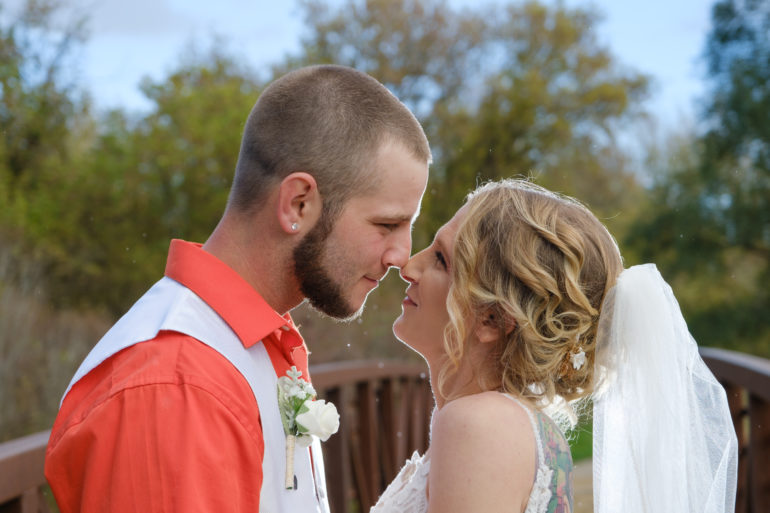


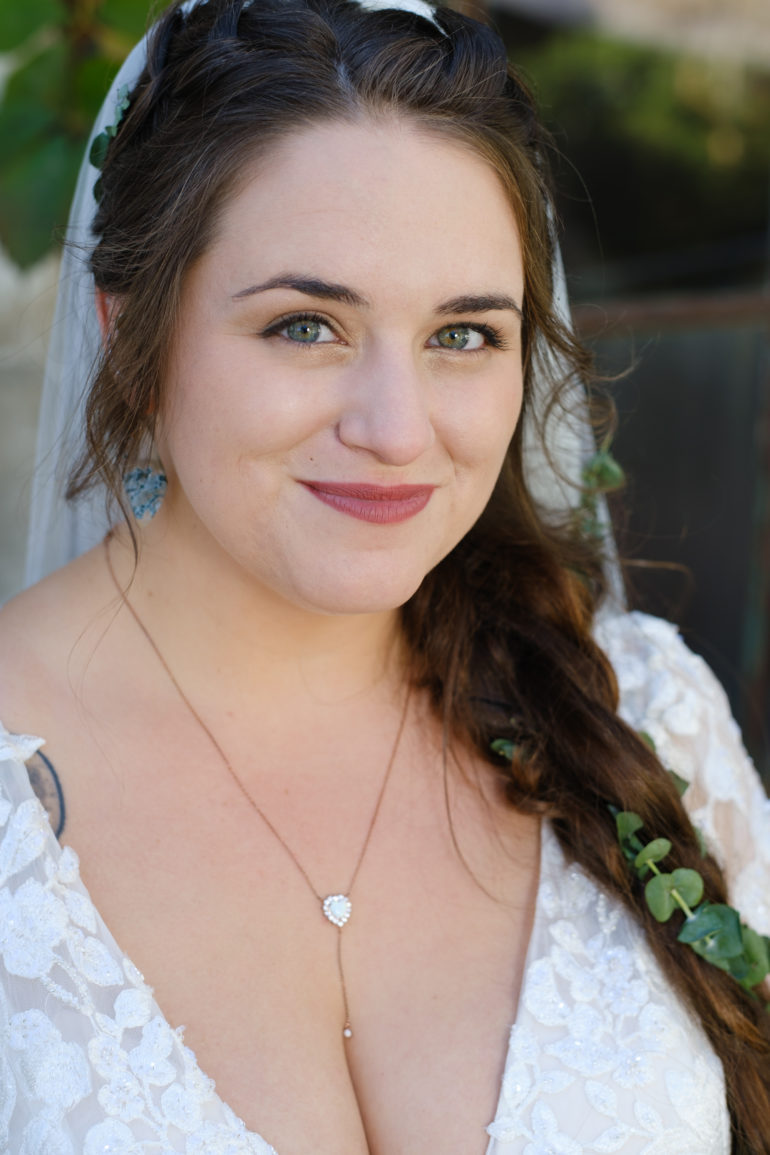
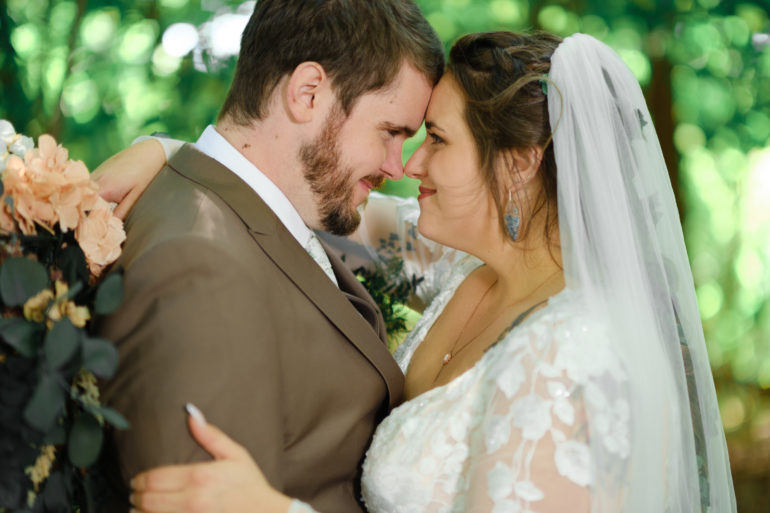
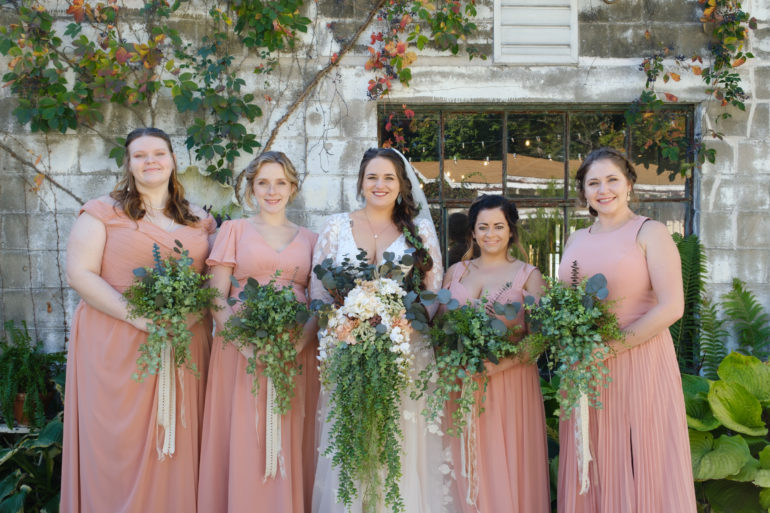
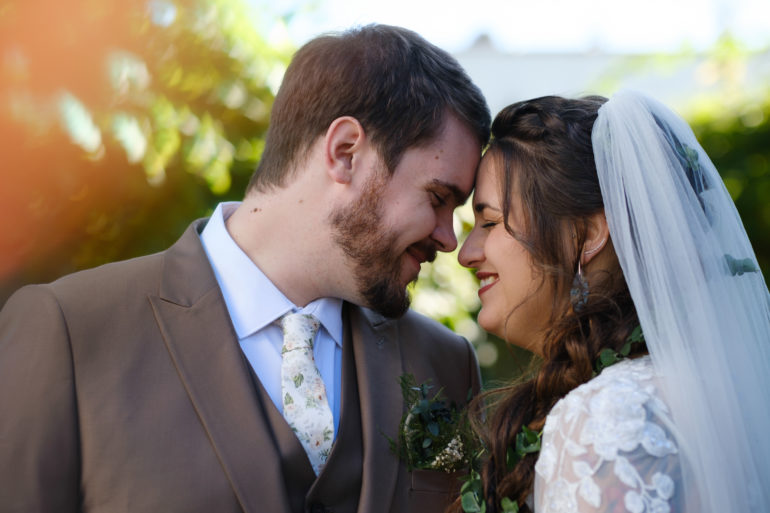
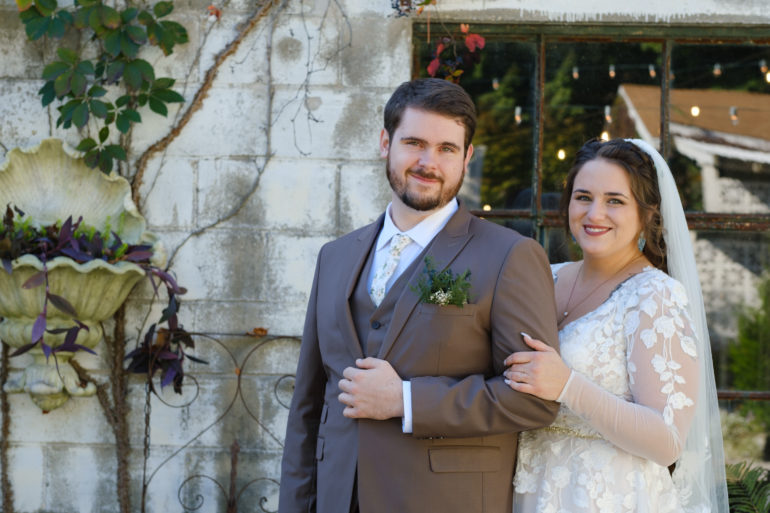
JPEG





Conclusions
The Flashpoint Zoom Li-on III delivers the features of a flagship flash for under $300. There’s a lot this flash can do – and what you can’t do with it is almost always something that requires the power of a strobe. It’s a versatile flash that goes from basic TTL to off-camera soft portraits to slow sync and multi-flash effects.
There are a few downsides, but they are small. The bounce head doesn’t lock. It takes a bit to be bumped out of place, but it can happen. The battery is open at the end, which means it could be more susceptible to damage from moisture. And there’s a bit of a learning curve to master all the features.
The Flashpoint Zoom Li-on III proves you don’t have to spend thousands on lighting equipment in order to control light in your shots. It’s not perfect, and if it cost $600, I would give it four stars. But the advanced features at this price point overcompensate for the learning curve, battery opening, and lack of a lock.

For $290, it’s a great tool. I’m giving the Flashpoint Zoom Li-on III five out of five stars.


